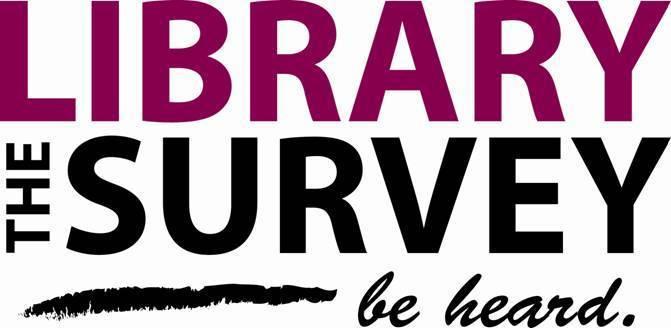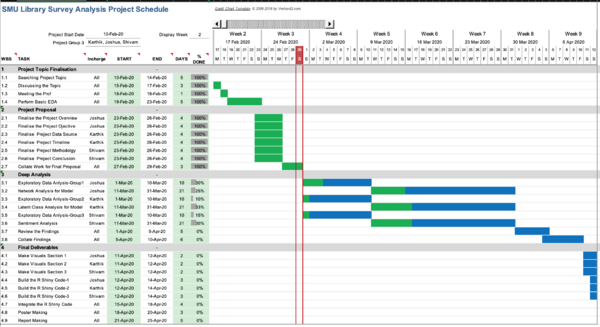Group03 proposal
Contents
Overview/Motivation
Singapore Management University (SMU) has 2 physical libraries – the Li Ka Shing Library and Kua Geok Chee Library, which aim to provide plethora of information to drive intellectual exchange and creation of knowledge in the SMU community. Every 2 years, the SMU library will conduct a user survey of faculty, staff and students to collect information to gauge its performance in providing library services to the community, based on 4 categories of assessment:
- Communication
- Service delivery
- Facilities and equipment
- Information resources
Current reports generated from responses from the Library Survey in 2018 are mainly displays of survey responses with highlighting of what library users consider as most important, with aggregate statistical results generated, but we feel there is potential for more insight to be discovered from the data.
Our project hopes to create a R Shiny application in order to revisit and uncover insights from Singapore Management University (SMU) Library Survey 2018 data to uncover insights in the perception of importance of aspects of library services and facilities, as well as the library performance based on these matrices, based on inputs from faculty, staff and students. As the survey questions are being reused for the SMU Library Survey 2020, there is potential for re-use of the R Shiny application for this year.
Project Objectives
Using the SMU Library Survey 2018 Dataset, we hope to:
- Use exploratory data analysis in order to generate meaningful insights beyond aggregated statistical data and uncovering the factors considered important by library users.
- Using text analytical techniques and topic modelling to analyses free text responses and sentiments of members of the SMU community who have participated in the survey.
- Use latent class analysis and association/network analysis to determine relationships between factors used to benchmark performance and provision of library facilities.
Data Source & Inspiration References
The SMU Library Survey 2018 data was obtained courtesy of the SMU library management and staff. Survey responses were obtained from a total of 2639 participants, including staff, faculty and students, capturing their demographics, as well as ratings of the importance of pre-defined factors and indicators, and their assessment of the performance library on them. Free text information in the form of comments were also collected to supplement their assessment of the library through pre-determined matrices and suggest recommendations for improvement of the library.
Proposed Story/Dashboard
Libraries typically develop surveys for 3 reasons: to gauge user satisfaction, to assess users' needs (usage), or to learn more about outcomes—that is, the end results of using the library. A fourth purpose of surveys is to gather demographic information about library users. The purpose of our project is in line with these needs, where we will build broad visualizations, identify areas to delve into and propose solutions/better outcomes.
Data Preparation – Study the dataset provided and clean the data for conducting analysis of the Survey Results
Analysis of Survey - Deep dive into the survey
- Exploratory Data Analysis - Perform EDA to analyze the survey results and come up with some interesting findings.
- Sentiment Analysis - Analysis of the overall sentiment of the comments provided in the survey, leading to positive/negative emotions about the library
- Model Building - Build a model using LCA / Neural Networks to understand which factors are more important to people from different study areas
Visualizations – Create Visuals to demonstrate the findings of the Survey
Implementation – Build R-Shiny app and provide technical report
Project Timeline
Please refer to the Gantt chart for the detailed breakdown of work and tentative planned schedule to achieve the project milestone.
Data Description
| S.No. | Data Field | Description | Data Type |
|---|---|---|---|
| 1 | ResponseID | ID of the respondent | Numeric |
| 2 | Campus | Name of the Library | Categorical |
| 3 | Position | Designation | Categorical |
| 4 | StudyArea | Major area of study, research or teaching | Categorical |
| 5 | ID | Whether an International (non-exchange) student or not | Categorical |
| 6 | I01-I26 | Survey Questions Category 1 | Ordinal |
| 7 | P01-P26 | Survey Questions Category 2 | Ordinal |
| 8 | Comment1 | Suggestions for improvement or any other comments about the Library | String |
| 9 | HowOftenL | How frequently the library is visited | Ordinal |
| 10 | HowOftenC | How frequently the campus is visited | Ordinal |
| 11 | HowOftenW | How frequently the library resources are accessed | Ordinal |
| 12 | NA01-NA26 | Survery Questions Category 3 | Ordinal |
| 13 | NPS1 | Likelyhood of recommending the library service to other students | Ordinal |
Tools & Packages
Tools used - Rstudio: https://rstudio.com/
| S.No. | Packages | Purpose |
|---|---|---|
| 1 | shiny() | Package for creating the R shiny interface |
| 2 | topicmodels() | Package for Topic Modelling |
| 3 | ggplot2() | Package for creating the Charts & Visualization |
| 4 | dplyr() | Package for Data Manipulation |
| 5 | sentimentanalysis() | Package for Performing Sentiment Analysis on Remarks |
| 6 | wordcloud() | Package for creating Word Clouds |
Members – Milestones
Joshua LAM Jie Feng
- Exploratory Data Analysis
- Network Analysis
Karthik NITYANAND
- Exploratory Data Analysis
- Latent Class Analysis
Shreyansh SHIVAM
- Exploratory Data Analysis
- Topic Modelling

